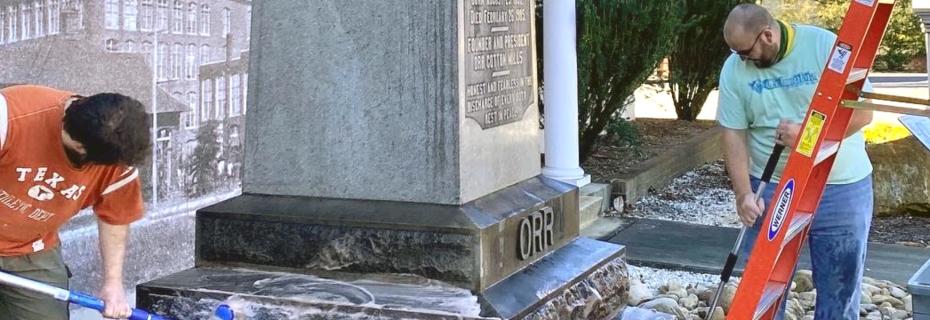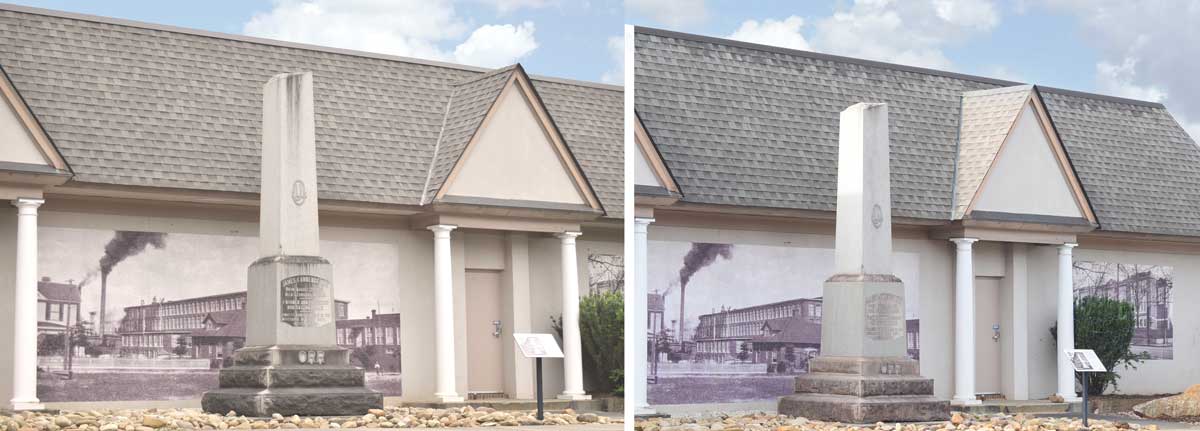Visit
 The Official Web Site of the State of South Carolina
The Official Web Site of the State of South Carolina

One of the great things about working in the museum field is that each day is a little different. This week, we had the chance to do some light preservation work on a key artifact of the museum collection: the James L. Orr Monument. Over time, anything left outdoors in the elements will gather dust, pollen, mold, lichens, or other materials which soil surfaces. Our monument began showing some of these stains and needed some curatorial attention.
It may seem simple to clean a monument of this size and material, but it does require great care and caution to not cause any harm. Even such a hard material as rose quartz could be chipped away by a pressure washer, especially if light damage exists that is virtually invisible to the eye. That is why the museum treated the Orr Monument with an organic, acid neutral cleaning solution. The solution was scrubbed into the monument’s surface with soft brushes, rinsed, and then coated again before being left to dry. Results were noticeable even on the day of the treatment, but the monument will reach its peak cleanliness in three to six weeks as the process continues to dissolve natural stains created by mold and lichens.
While you may not have a monument to clean, you may have another historic surface in need of treatment: perhaps a family cemetery or headstone, old masonry, or even stone and concrete statues. Follow these tips for any historic cleaning project:

As of November 2020, we are about halfway through the cleaning process. Follow us on social media for more updates about our preservation work on this monument and other items in our collection.